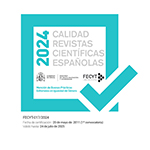Las bioeconomías de la provisión de óvulos en Estados Unidos y en España: una comparación de los mercados médicos y las implicaciones en la atención a las donantes
Resumen
Los sistemas reguladores que controlan la reproducción con la participación de terceros determinan el modo en que las personas que donan materiales y trabajo reproductivos –óvulos, esperma y servicios de gestación subrogada– son escogidas y compensadas. Estados Unidos y España tienen regulaciones muy diferentes en lo que concierne a la reproducción con terceros, pero ambos son líderes mundiales en la prestación de tratamientos de fertilidad con donantes de óvulos. En este trabajo, analizamos el modo en que dos diferencias fundamentales entre estos sistemas –cómo son escogidas y cómo son compensadas las donantes– influyen en el mercado más amplio de los óvulos humanos, así como las implicaciones que esto tiene para las mujeres proveedoras. Apoyándonos en entrevistas y en el trabajo de campo realizado en Estados Unidos y en España, este artículo compara cómo la donación de óvulos compensada opera en un sistema público/privado regulado (España) frente al modo en que lo hace en un sistema médico no regulado de libre mercado (Estados Unidos). Exploramos cómo las diferentes bioeconomías reproductivas influyen en la mayor biodisponibilidad de unas mujeres sobre otras en el mercado de los óvulos humanos. Finalmente, hipotetizamos que los avances en las tecnologías de crioconservación de óvulos –y, por ende, el incremento del almacenamiento de óvulos en bancos– puede fomentar una cultura del consumo de los cuidados de la fertilidad en ambos países.Descargas
Descarga artículo
Licencia
La Revista de Antropología Social, para fomentar el intercambio global del conocimiento, facilita el acceso sin restricciones a sus contenidos desde el momento de su publicación en la presente edición electrónica, y por eso es una revista de acceso abierto. Los originales publicados en esta revista son propiedad de la Universidad Complutense de Madrid y es obligatorio citar su procedencia en cualquier reproducción total o parcial. Todos los contenidos se distribuyen bajo una licencia de uso y distribución Creative Commons Reconocimiento 4.0 (CC BY 4.0). Esta circunstancia ha de hacerse constar expresamente de esta forma cuando sea necesario. Puede consultar la versión informativa y el texto legal de la licencia.












